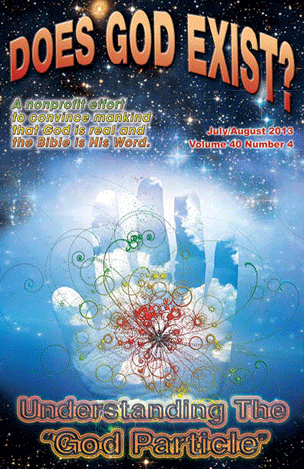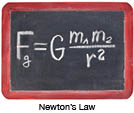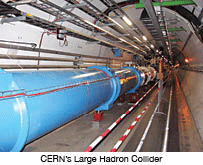
 I am a retired physics teacher, and at the start of the school year we always had to get a few definitions in order before we could explore the wonders of Newtonian mechanics. One of those definitions that always caused wonderment in the minds of my students was the
I am a retired physics teacher, and at the start of the school year we always had to get a few definitions in order before we could explore the wonders of Newtonian mechanics. One of those definitions that always caused wonderment in the minds of my students was the  difference between weight and mass. We would point out that mass was measured in kilograms and grams in the metric system, and in slugs in the English system. They would think I was kidding them until I got into units of force or weight which was measured in dynes and newtons in the metric system and in pounds in the English system. I would ask them when they went into orbit in future years, would they become weightless or massless? Our usual definition of mass was that it was the quantity of material something contained, and we would be able to relate it to the mole in chemistry which was defined as 6.0238 x 1023 molecules. Weight is a kind of force and deals with a push or a pull on something. The pull of gravity is your weight, but your mass is how many molecules there are in your body, which can be measured in several different units.
difference between weight and mass. We would point out that mass was measured in kilograms and grams in the metric system, and in slugs in the English system. They would think I was kidding them until I got into units of force or weight which was measured in dynes and newtons in the metric system and in pounds in the English system. I would ask them when they went into orbit in future years, would they become weightless or massless? Our usual definition of mass was that it was the quantity of material something contained, and we would be able to relate it to the mole in chemistry which was defined as 6.0238 x 1023 molecules. Weight is a kind of force and deals with a push or a pull on something. The pull of gravity is your weight, but your mass is how many molecules there are in your body, which can be measured in several different units.
In the process of all of this confusing discussion, someone would ask what causes gravity. My answer many years ago when I was teaching this material was that mass had as one of its properties, the tendency to attract other masses. We tested Newton’s universal law  of gravity which says that if you had two masses m1 and m2 located some distance (r) apart, they would attract each other with a force calculated by multiplying the masses together, dividing by the square of the distance they were apart, and then multiplying again by a gravitational constant (G) which was 6.67 x 10-11. I would explain this as a proportionality constant, one of many constants that appear in nature that allows matter to exist in a stable form. The units of the proportionality constant was newton-meters squared per kilogram squared with the force measured in newtons and the mass measured in kilograms. Why matter should attract other matter, and why these constants were necessary remained unanswered. In my own mind, the presence of so many constants like this one was an indication that an intelligence was involved in choosing the constants and arranging the matter to obey the commands of the equations.
of gravity which says that if you had two masses m1 and m2 located some distance (r) apart, they would attract each other with a force calculated by multiplying the masses together, dividing by the square of the distance they were apart, and then multiplying again by a gravitational constant (G) which was 6.67 x 10-11. I would explain this as a proportionality constant, one of many constants that appear in nature that allows matter to exist in a stable form. The units of the proportionality constant was newton-meters squared per kilogram squared with the force measured in newtons and the mass measured in kilograms. Why matter should attract other matter, and why these constants were necessary remained unanswered. In my own mind, the presence of so many constants like this one was an indication that an intelligence was involved in choosing the constants and arranging the matter to obey the commands of the equations.
 We have come a long way since the 1950s when I learned all of this in my physics classes at the university level. Quantum mechanics has opened new doors for us to understand much more about what mass and charge and space and time are about. The Newtonian laws that we use to describe large scale matter like cars and space ships do not work when one is studying sub-atomic particles like quarks and neutrinos. In 1964 Peter Higgs developed a theory that he felt might explain why some elementary particles (like protons) have rest mass and others (like photons) do not. He proposed an energy field, now known as a Higgs field, which he said permeated space. He proposed that when a particle called a Higgs boson collided with the Higgs field it would produce mass in quarks, electrons, etc., as well as electric charge. His calculations showed that the boson would have an energy between 125 and 127 GeV/c2.
We have come a long way since the 1950s when I learned all of this in my physics classes at the university level. Quantum mechanics has opened new doors for us to understand much more about what mass and charge and space and time are about. The Newtonian laws that we use to describe large scale matter like cars and space ships do not work when one is studying sub-atomic particles like quarks and neutrinos. In 1964 Peter Higgs developed a theory that he felt might explain why some elementary particles (like protons) have rest mass and others (like photons) do not. He proposed an energy field, now known as a Higgs field, which he said permeated space. He proposed that when a particle called a Higgs boson collided with the Higgs field it would produce mass in quarks, electrons, etc., as well as electric charge. His calculations showed that the boson would have an energy between 125 and 127 GeV/c2.
In 1993 Leon Lederman named it “the God particle.” There is much debate about why that name was given and why it stuck, but it was not for religious reasons. Lederman indicated the nature of the question by subtitling his material, “If the universe is the answer, what is the question?” If the Higgs boson could explain why particles have mass and why electric charge exists, it would be explaining the mechanisms that produced the physical universe in which we live. Since it explained so much of the nature of how things were created, the name “God particle” was coined. Many physicists do not like the term, but the media has made it pretty much a household name.
On July 4, 2012, an experiment was performed using the Hadron Collider at the European Organization for Nuclear Research (CERN) on the border between France and Switzerland. The experiment was called ATLAS (short for A Toroidal LHC Aparatas). It was announced that evidence was found of a boson of 125 – 127 GeV/c2. The media immediately announced that “the God particle” had been discovered.
 This grossly oversimplified explanation is not the main point we wish to make in this article. This journal deals with apologetics, not the latest experiments in science. Has the discovery of the “God particle” (assuming it sticks and is in reality factual) eliminated God’s role in the creation of the cosmos? Does this discovery have any implications for apologetics as a whole? That is what this discussion is really about.
This grossly oversimplified explanation is not the main point we wish to make in this article. This journal deals with apologetics, not the latest experiments in science. Has the discovery of the “God particle” (assuming it sticks and is in reality factual) eliminated God’s role in the creation of the cosmos? Does this discovery have any implications for apologetics as a whole? That is what this discussion is really about.
In my 41 years of teaching high school science I always avoided confrontations with those who were from a fundamentalist religious background by telling them that all science should be to them is a way of understanding how God did what he did. Philosophers can have massive discussions about this subject, but on a layman’s level I maintain that is a healthy biblical view. Proverbs 8 is an interesting study in this subject. Wisdom is speaking in the passage and indicates its role in the process of creation. In verses 22 – 23 wisdom says: “The LORD possessed me at the beginning of His way, / Before His works of old. / I have been established from everlasting, / From the beginning, before there was ever an earth” (NKJV).
The entire passage revolves around God’s wisdom and planning in every aspect of the creation process. Passages like Psalm 104:2 and Isaiah 40:22 speak of God “stretching out the heavens” with the Hebrew word natah meaning “to stretch out or spread out” being used to describe the process. The Bible simply indicates that God has used a variety of processes beyond the scope of man's understanding to create time, space, energy, and the cosmos in which we live.
As quantum mechanics has developed, it has become increasingly obvious that a whole new set of processes was involved in the creation. If the Higgs boson interacts with a Higgs energy field producing mass and charge, what has been discovered is one more step in the processes God used to create the creation. The production of the energy field and of the Higgs boson are not under discussion. As we have seen, the term “God particle” was not a religious term — nor a scientific term. It was simply an indication of the nature of the discovery, helping to understand the processes used initially to create us and the world in which we live.
One of the cliches used in the past was “If man comes to understand the origin of mass and charge, all it will prove is that it took intelligence to do it in the first place.”
Picture credits:
Cover photo: Background: NASA, ESA, and the Hubble Heritage Team (STScI/AURA)-ESA/Hubble Collaboration.
.......Foreground: © AmeeC. Image from BigStockPhoto.com. Composite by Roland Earnst
© keeweeboy. Image from BigStockPhoto.com
© PixelsAway. Image from BigStockPhoto.com
© lineartestpilot. Image from BigStockPhoto.com
en.wikipedia.org/wiki/File:CERN_LHC_Tunnel1.jpg
